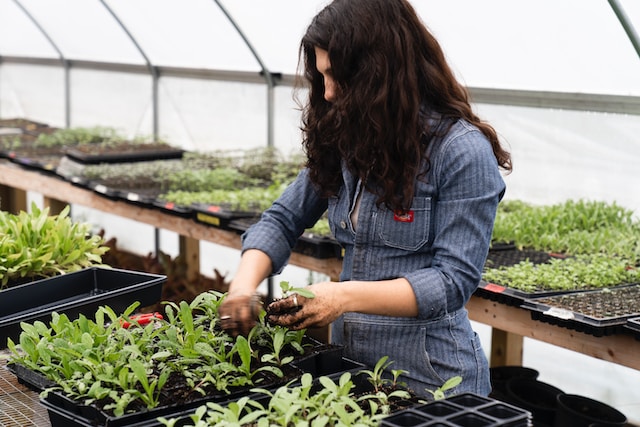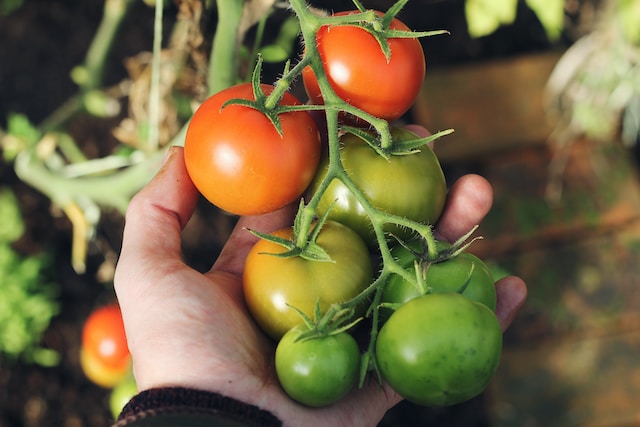Urban farming is all we hear on LinkedIn nowadays. Everyone’s talking about it and even the government is getting on board. People and companies are earning crores from it and content about urban agriculture is everywhere. But why is it so popular? Let’s take a step back and explore the basics of urban farming!
As you continue reading, you’ll discover that the blog post title, which claims that sustainable urban agriculture is the sole solution to the problem, will be thoroughly explained. I’ll provide you with all the answers to your questions about what, why and how it works.
Table of Contents
What is Urban Farming?

Urban agriculture is the practice of growing, processing and distributing food within urban and peri-urban areas. It encompasses various techniques and approaches, ranging from community gardens and rooftop farming to aquaponics, vertical farming and hydroponics.
The primary objective of urban agriculture is to produce fresh, nutritious food while minimizing the ecological footprint associated with traditional agricultural practices.
Types of Urban Agriculture

Urban farming comes in various forms, each tailored to the specific needs and constraints of urban spaces. Here are some common types of urban farming:
#1 Rooftop Gardens
Rooftop gardens are one of the most recognizable forms of urban farming. They involve transforming the rooftops of buildings into productive green spaces. These gardens can range from small containers with herbs to extensive vegetable gardens and even commercial-scale operations. Rooftop gardens make efficient use of underutilized space and can provide fresh produce to residents or businesses.
#2 Community Gardens
Community gardens are shared spaces where community members come together to cultivate fruits, vegetables, herbs and sometimes even flowers. These gardens promote community engagement, education and the sharing of resources. Each participant usually maintains their own plot and surplus produce may be shared or donated.
#3 Vertical Farming
Vertical farming takes advantage of vertical space by stacking multiple layers of plants in indoor environments. It relies on controlled environments, including artificial lighting and hydroponic or aeroponic systems, to grow crops efficiently. Vertical farming can be highly productive and resource-efficient, making it suitable for limited urban spaces.
#4 Container Gardening
Container gardening involves growing plants in containers or pots. This is a versatile form of urban farming as it can be done on balconies, patios, rooftops, or even indoors. Various crops can be grown in containers, including herbs, vegetables and ornamental plants. Container gardening is accessible to individuals with limited space.
#5 Aquaponics and Hydroponics
Aquaponics and hydroponics are soilless farming methods that use water to grow plants. In aquaponics, fish and plants are cultivated together in a symbiotic system where the waste from fish provides nutrients for the plants and the plants help purify the water for the fish. Hydroponics involves growing plants directly in nutrient-rich water. These systems are efficient and can be set up in controlled indoor environments.
#6 Urban Orchards
Some urban areas host small orchards or fruit trees in public spaces like parks, community gardens, or along sidewalks. These urban orchards provide free access to fresh fruits for residents and contribute to urban biodiversity.
#7 Window Farms
Window farms are small hydroponic or aeroponic systems designed to fit on window ledges. They allow people living in apartments or condos to grow herbs and small vegetables indoors, making use of natural sunlight and limited space.
#8 Green Walls
Green walls or living walls are vertical structures covered in vegetation. These can be both decorative and functional, improving air quality and thermal regulation in urban areas while also providing opportunities for small-scale plant cultivation.
#9 Indoor Farming
Indoor farming encompasses various methods, including greenhouse cultivation, hydroponics, aquaponics and vertical farming, conducted within controlled indoor environments. These farms can produce crops year-round and are not limited by seasonal changes or adverse weather conditions.
How to Implement Urban Agriculture?

Implementing urban agriculture involves careful planning, resource management and community involvement. Here’s a step-by-step guide to kickstart your urban farming journey:
Step 1: Research and Education
Start by gaining knowledge about urban agriculture (which you doing, great!), including the different techniques, suitable crops and necessary equipment. Consider enrolling in workshops, courses, or joining local gardening groups to enhance your understanding.
Step 2: Assess Your Space and Resources
Evaluate the available space, whether it’s a rooftop, backyard, or community plot. Consider factors like sunlight, water access and wind patterns. Assess available resources such as soil, compost and necessary farming equipment.
Step 3: Choose Suitable Crops and Techniques
Select crops that thrive in your region and suit the chosen urban farming technique. Tailor your choices to fit the available space and resources.
Step 4: Prepare the Soil or Growing Medium
If opting for soil-based farming, prepare the soil with necessary amendments and compost. For soilless methods like hydroponics or aquaponics, ensure you have the appropriate growing medium and nutrient solutions.
Step 5: Plant and Maintain Your Crops
Plant your chosen crops following the recommended guidelines. Monitor their growth, provide adequate water, nutrients and light. Regularly check for pests, diseases and address any issues promptly.
Step 6: Harvest and Share the Bounty
Once your crops are ready for harvest, celebrate your efforts and share the produce with your community. Engage with local markets, restaurants or create a community-supported agriculture (CSA) program to distribute the surplus.
Why Urban Agriculture is Buzzing in the Market?

The growing buzz around urban agriculture can be attributed to several compelling reasons:
#1 Sustainable Food Production
Urban agriculture promotes local, sustainable food production, reducing the need for extensive transportation and minimizing the associated carbon footprint. Consumers are increasingly valuing sustainable and locally sourced produce.
#2 Food Security
By fostering local food production, urban agriculture enhances food security by ensuring a constant and reliable supply of fresh produce, especially in urban areas where food access may be limited.
#3 Health and Well-being
Fresh, locally grown produce is typically more nutritious and free of harmful chemicals often found in mass-produced crops. Urban agriculture encourages a healthier lifestyle and diet for urban dwellers.
#4 Community Engagement
Community gardens and urban farming initiatives strengthen community bonds and encourage active participation. They provide educational opportunities, social interactions, and a sense of ownership and pride in one’s neighbourhood.
#5 Aesthetic and Environmental Benefits
Rooftop gardens and green spaces created through urban agriculture enhance the urban landscape, improving air quality and overall aesthetics of the city.
The Future of Urban Agriculture

The point of discussion isn’t and shouldn’t be whether urban farming has a future, scope and will it offer opportunities or not. Urban agriculture is the only solution for upcoming problems like food security, growing population, rapid urbanization and others.
People have just begun to use its name and it’s already a buzz. Urban farming sure is poised for a bright future as cities continue to expand and face the challenges of climate change, food security, environmental sustainability and others. Yes! Urban farming in the future is going to change and we can have a look at how:
#1 Technological Advancement
Advancements in agricultural technologies, such as AI-driven monitoring systems, efficient hydroponic setups and automation, will streamline urban farming processes, making them more efficient and productive.
#2 Integration of Circular Economy Principles
Urban agriculture will increasingly adopt circular economy principles, where waste from one process becomes a valuable resource for another. For instance, composting organic waste to enrich the soil for farming.
#3 Policy Support and Incentives
Governments and municipalities will likely provide more support and incentives for sustainable urban agriculture to encourage its growth and development. This may include tax breaks, grants and zoning regulations that favour urban farming initiatives.
#4 Educational Integration
Urban agriculture will become an integral part of educational curricula, promoting sustainable farming practices and inspiring the next generation to actively participate in local food production.
#5 Collaborative Initiatives
Collaborations between communities, businesses and educational institutions will lead to the creation of urban farming hubs, fostering knowledge sharing, innovation and a robust urban agriculture network.
Bottom Line…
As stated in the title “Urban Farming: The Only Solution of the Problem,” Urban agriculture is the only sustainable and promising solution to address the challenges posed by rapid urbanization and the need for sustainable farming practices.
Through education, community involvement and technological advancements, we can revolutionize the way we grow and consume food, ensuring a greener, healthier and more sustainable future for our cities and the planet as a whole.
Do you believe in the potential of urban farming to revolutionize the way we live and address critical issues? Share your insights, questions, or success stories in the comments below and let’s cultivate a conversation that can inspire positive change!

